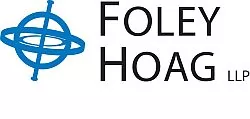- within Media, Telecoms, IT and Entertainment topic(s)
Key Takeaways:
- On July 4, 2025, "The One Big Beautiful Bill Act" (the "Act") was signed into law, introducing significant expansions of the tax benefits of "qualified small business stock" ("QSBS") issued on or after July 5, 2025.
- The Act introduced three key changes to the rules for QSBS
issued on or after July 5, 2025:
- Loosening the aggregate gross asset test for determining which corporations can issue QSBS, by increasing the applicable threshold.
- Increasing the amount of eligible gain on the sale or exchange of QSBS that is excludible from income.
- Decreasing the amount of time that QSBS must be held to qualify for some level of gain exclusion.
On July 4, 2025, "The One Big Beautiful Bill Act,"
Pub. L. No. 119-21, was signed into law, introducing significant
expansions of the tax benefits of "qualified small business
stock" issued on or after July 5, 2025.
Overview of QSBS Rules
Under the QSBS rules, if (1) an eligible U.S. "C"
corporation (2) that actively operates a "qualified small
business" (3) originally issues its stock to a noncorporate
taxpayer (4) in exchange for money, other property (not including
stock) or as compensation for services, and (5) prior to, and
immediately after, such issuance, the corporation's aggregate
gross asset value falls below the applicable threshold, and (6) the
taxpayer holds the stock for the applicable holding period, then
(subject to certain other requirements) the taxpayer generally can
exclude some or all of the amount of eligible gain from the sale or
exchange of QSBS.
The determining factor with respect to the percentage of gain from
the sale or exchange of QSBS that can be excluded from a
taxpayer's gross income (and, therefore, not subject to federal
taxation) is the date on which the QSBS was issued, as summarized
in the following chart (which takes the Act into
consideration):
| Date QSBS Issued | Minimum Holding Period | Exclusion Percentage | QSBS Effective Tax Rate |
Effective Tax Rate if the QSBS Rules do not Apply |
| Aug. 11, 1993– Feb. 17, 2009 |
> 5 years | 50% | 15.9% | 23.8% |
| Feb. 18, 2009– Sept. 27, 2010 |
> 5 years | 75% | 7.95% | |
| Sept. 28, 2010– July 4, 2025 |
> 5 years | 100% | 0% | |
| July 5, 2025– on | ≥ 3 years, but < 4 years | 50% | 15.9% | |
| ≥ 4 years, but < 5 years | 75% | 7.95% | ||
| ≥ 5 years | 100% | 0% |
If the applicable QSBS exclusion percentage is 100%, then the
entire amount of eligible gain is excluded from the taxpayer's
income and, therefore, is not subject to federal tax.
If the applicable QSBS exclusion percentage is 50% or 75%, then the
portion of eligible gain that remains subject to tax (i.e., 50% or
25%, respectively) is subject to federal tax at a blended rate of
31.8% (i.e., a special 28% federal income tax rate under the QSBS
rules, plus the 3.8% net investment income tax rate). The
"QSBS Effective Tax Rate" in the foregoing table is not
31.8%; rather, the "effective" rate is based on ratio of
the special rate as a percentage of total gain from the sale or
exchange of QSBS.
The "QSBS Effective Tax Rates" do not apply to gains
realized in excess of the maximum gain eligible for exclusion (see
further discussion below). The "Effective Tax Rate if the QSBS
Rules do not Apply" column in the above chart assumes a 20%
long-term capital gain rate and additional net investment income
tax of 3.8%.
The rates in the chart above also do not take into account any
alternative minimum tax add-back applicable to eligible gains from
the sale of QSBS acquired before September 28, 2010.
Changes Effective July 5, 2025
The Act introduced three key changes to the QSBS rules:
| QSBS Issued BEFORE July 5, 2025 |
QSBS Issued AFTER July 4, 2025 |
|
| Aggregate Gross Asset Threshold (i.e., the issuing corporation's aggregate gross asset value at all times prior to, and immediately after, a grant of QSBS) |
≤ $50 million (not indexed for inflation) | ≤ $75 million (indexed for inflation, with indexing beginning in 2027) |
| Eligible Gain (i.e., the maximum amount of gain from the sale or exchange of QSBS that can be excluded from a taxpayer's gross income, on a per-taxpayer/per-issuer basis) |
Greater of: $10 million (not indexed for inflation); or 10x basis |
Greater of: $15 million (indexed for inflation, with indexing beginning in 2027); or 10x basis |
| Holding Periods (i.e., the minimum amount of time a taxpayer must hold QSBS to qualify for the applicable gain exclusion) |
> 5 years | ≥ 3 years < 4 years (50%) ≥ 4 years < 5 years (75%) ≥ 5 years (100%) |
These changes would provide greater flexibility and planning
opportunities to founders and investors of emerging companies and
expand the potential number of qualifying small businesses that may
benefit from the QSBS rules.
For our prior alert summarizing certain matters relating to QSBS
prior to the Act, click here.
The content of this article is intended to provide a general guide to the subject matter. Specialist advice should be sought about your specific circumstances.




